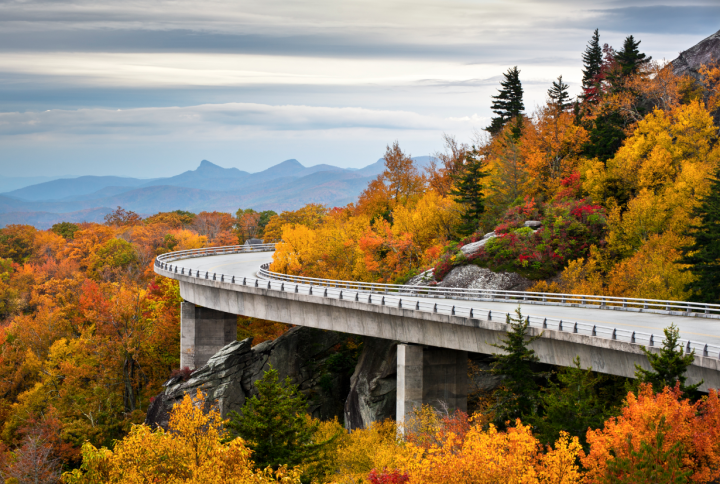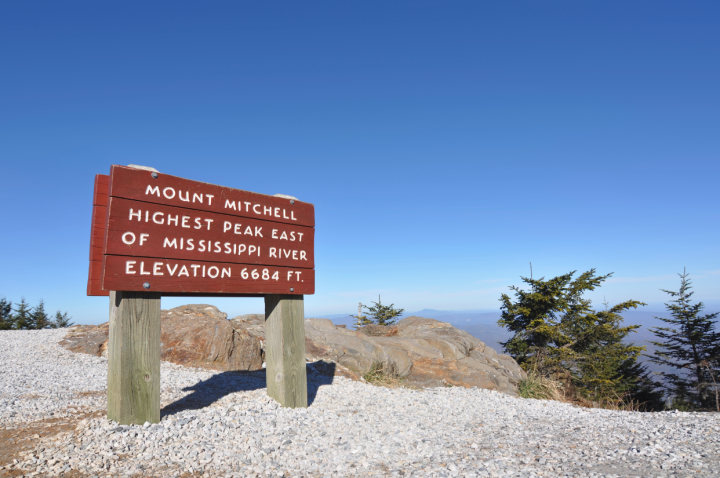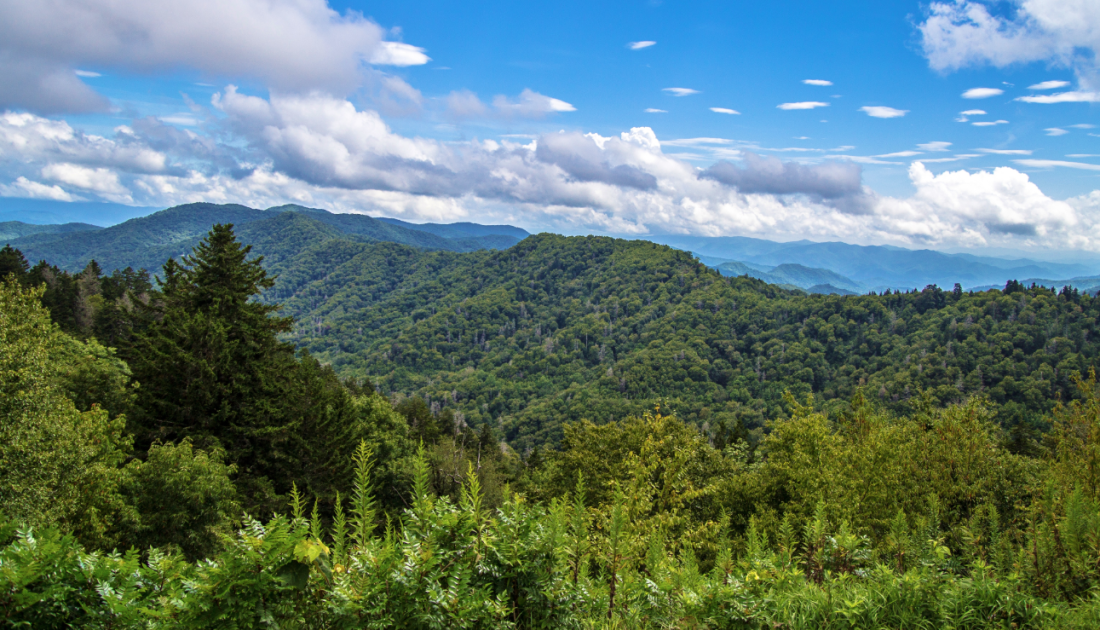To many Western North Carolina residents, the region’s parks and recreational areas represent a chance to experience our state’s natural beauty and preserve its rich history. But what’s often overlooked is these attractions’ key role in bolstering local economies.

A recent report from the National Park Service highlights the way North Carolina’s protected areas benefit adjacent communities. Using statistics compiled by economists with the U.S. Geological Survey and the National Park Service, the report documents annual visits to national sites within the state and the resulting economic effects on “gateway communities,” defined as those within a 60-mile radius of such parks and monuments.
According to the report, titled “2014 National Park Visitor Spending Effects,” North Carolina ranked third nationally, behind only Alaska and California. The more than 16.7 million visitors to North Carolina’s national park sites last year spent roughly $1.1 billion during their stays.
Nationally, notes Maggie Tyler of the Park Service’s Southeast Regional Office. “We saw a 7 percent increase in park visitation from 2013 to 2014.”
The reasons for the increase vary from region to region, says Tyler, citing North Carolina’s diverse physical landscape and strategic location as keys to the state’s popularity with tourists. “We have two great dichotomies: the mountains and the beach. Not many states can offer both those things,” she points out, “or offer both within a reasonable driving distance. Families can drive across the state and experience incredibly iconic parks from end to end, plus a lot of history along the way.”
Those visitors, the report notes, helped create 18,500 jobs last year, pouring about $1.5 billion into the state’s economy. Much of that spending went toward things like lodging, restaurants and gas, creating a “ripple effect” in local economies (often in rural or disadvantaged areas) that are geared toward accommodating tourists’ needs.
“Those are the people we grocery-shop with,” Tyler explains. “They fix our cars, and they’re the ones that the tourists rely on. It’s an important connection that allows everyone to contribute to the public lands we’re using.”
These public assets’ growing popularity, however, means local communities may face challenges if they want to preserve those significant economic benefits.
Return on investment
North Carolina’s nine national parks and historic sites include the Blue Ridge Parkway, Great Smoky Mountains National Park and the Carl Sandburg Home.
Topping the list of the WNC attractions is the Blue Ridge Parkway, whose more than 13.9 million visitors spent some $863 million last year and supported an estimated 14,020 jobs. The Smokies, meanwhile, drew more than 10 million visitors, generating around $806 million in revenue; and the Carl Sandburg Home’s over 82,000 visitors generated $4 million in total visitor spending while supporting 75 jobs.
And those benefits, notes Tyler, are pretty consistent. “As we’ve done these studies year after year, we continue to see that every time American taxpayers invest money in the public park system, there’s a great return into the economy,” she says. “This year’s numbers show that for every dollar invested by taxpayers into the National Park Service, over $10 comes back into the U.S. economy.”
The Park Service tracks both direct spending by visitors and “indirect” or “induced” spending by the businesses serving them. Together, these categories, including the associated income and job growth, constitute the “total economic effect of visitor spending in a local economy,” the report explains.
A formula developed by the Park Service identifies different types of visitors and where in the local economy their money is being spent, based on figures and metrics provided by each park’s officials. But quantifying the impact of more ambiguous sites like the Blue Ridge Parkway can be problematic.
“These units,” the report notes, “have some of the highest number of visits while posing the most difficult problems for estimating visits, spending and impacts.” One big challenge is differentiating between local and nonlocal visitors; in addition, however, “Better data on parkway spending patterns and trip characteristics is needed.”
North Carolina’s state parks face similar issues. “We have not had the resources in recent years to do a timely economic analysis on how park visitation relates to local economic revenue,” says Charlie Peek, public information officer for the N.C. Division of Parks & Recreation, though he speculates that the results would be similar to what the National Park Service found.
According to a report issued by the N.C. Department of Environment and Natural Resources earlier this year, state parks and recreation areas attracted a record 15.6 million visitors in 2014. That constitutes a “healthy” 10 percent increase from the previous year, says Peek, adding that 2015 could see even higher totals.
And though the most popular state parks are in the state’s eastern and Piedmont regions, WNC destinations such as Mount Mitchell, Chimney Rock, South Mountains and Stone Mountain state parks all saw substantial increases in visitors last year, and the Southern Appalachians’ growing popularity as a tourist destination will most likely spill over to adjacent natural attractions.
Collateral damage
But while the increase in both foot and vehicle traffic may be good news economically, it could harm the very landscapes and ecosystems that are attracting all those tourists.
“We have a dual mission,” notes Tyler. “To protect and preserve these delicate environments, while at the same time allowing for public enjoyment.”
Maintaining that balance, she explains, calls for constant monitoring and re-evaluation, and it may require restricting the number of daily visitors to a particular site, or instituting “quota camping” during certain seasons to accommodate vegetative and wildlife cycles.
Peek agrees, saying that “Increased visitation certainly intensifies the challenge of balancing recreation with protection of the natural resources. … Practically every state park has areas that are particularly sensitive in terms of rare species and delicate habitats. Careful planning can address that.”
But the answer, he maintains, lies not in restricting visitation but in “thoughtful expansion of the parks, the parks system and persistent efforts for conservation in general, with the help of land trusts and conservation organizations.”
Tyler, too, stresses the importance of collaboration. “There are hundreds of different community groups and organizations that get out there and do the work that we just don’t have the time or resources to do,” she says. “They become an extension of the Park Service in educating the public on how to be good stewards of the resources.”
Education, says Peek, may be the most effective tool for preserving the integrity of parklands. Citing things like exhibit halls and educational hikes led by park rangers, he says, “We’ve found that the more visitors know about the sensitive natural resources in a state park, the more they’ll try to help us in protecting those resources.”
The National Park Service also places a premium on educational efforts. “We work very hard to educate the public about their visit,” notes Tyler. “As visitation increases, we constantly monitor and re-evaluate our land management decisions.” And public acceptance of the resulting changes “depends on how well we communicate to them what we’re doing and why we’re doing it.”
Preserving profits
Meanwhile, Asheville continues to show up on list after list of top destinations to visit or move to, making it likely that both national and state parks in the region will continue to draw more visitors. And for some WNC communities, this will mean continued opportunities to profit from preserving these unique landscapes.
What can residents do to support those efforts?

“Having the public support the state to expand funds to preserve protected land tracts,” says Angela Shepherd, communications director for the Southern Appalachian Highlands Conservancy, “is a giveback to the community in a way that preserves the lands, which draws tourism and brings money into the hotels and local businesses. It’s a win-win situation.”
“When we look to preserve land,” she explains, “we do look at whether those places are viewable from the Appalachian Trail or Mount Mitchell State Park, and other iconic landmarks in the area. If a development came into those areas, it’s going to impact visitation to those places. We’re not anti-development, but rather developing in the right places in the right way.”
Angie Chandler, executive director of the Blue Ridge National Heritage Area, also urges residents to “communicate to your community and businesses and national leaders about how important the parks and their resources are — not only to our quality of life but to businesses who want to be in a place with things to do, with the arts, and with our distinct cultural heritage.”
To view the full “2014 National Park Service Visitor Spending Report,” go to nature.nps.gov/socialscience/docs/VSE2014_Final.pdf. For a look at state park visitor numbers, check out ncparks.gov/News/media_room/annual_report.php.
Happy birthday NPS
Beginning in August of 2016, the National Park Service will stage events across the country to celebrate the agency’s 100th birthday. Several other federal agencies, as well as state and city parks, will team up to help commemorate the Park Service’s creation in 1916. For details on what will be happening in your area, go to findyourpark.com.




You can see a mobile home from the Blue Ridge Parkway in Asheville south of the Tunnel Road intersection and north I-40. I would plant some white pine trees on the field to block the blight.
That “blight” is somebody’s home, and probably the only one they can afford in a city hostile to anyone who isn’t loaded with money.
I urge the government to widen the Blue Ridge Parkway corridor. No one should be allowed to build so close to the parkway.
N, let’s hold them accountable. This is America not Haiti. They have no right to plop down their trash by the Blue Ridge Parkway for all to ogle. The standards of building by the BRP should be higher and/or historic looking and further away. Separately, I also urge a ban of all new mobile homes in Buncombe County. They subtract from the local economy (Warren Buffet gets richer (as if he needs the $$) at the expense of local home builders, they do not last for the next generation (short-term stupid thinking), they are ugly, they breed ignorance and hopelessness/poverty/violence, and they harm the cash cow of tourism.
“Separately, I also urge a ban of all new mobile homes in Buncombe County. ”
Better yet, why not just pass a law to make it illegal to be poor in Buncombe County?
if they own, or even just rent, the property, then they have every right to be right where they are. While ‘viewshed protection’ is a concern to the Parkway, copping an attitude such as yours only breeds anger and contempt. Widening the Parkway boundary would work maybe in a few cases such as this. Overall, it’s the long-distance views from the Parkway that are of a big concern…go and fight massive new subdivisions, new factories, ect…that are viewed from the Parkway. In this time of budgets stretched to the point of breaking, I seriously doubt resources are available to increase boundaries. What needs to be increased here is your compassion for those who can only afford these type homes. The main ‘short term stupid thinking’ here seems to belong to you. Trailers breed ignorance/hopelessness/poverty/violence? Such rhetoric from a resident of a city that supposedly prides itself on being tolerant, accepting of everyone? Granted, the Parkway is, in you’re uneloquent terminology a ‘cash cow’. The thing is, not everyone gets some of the ‘milk’ that comes from it. The hateful tone of your letter does nothing for either side.